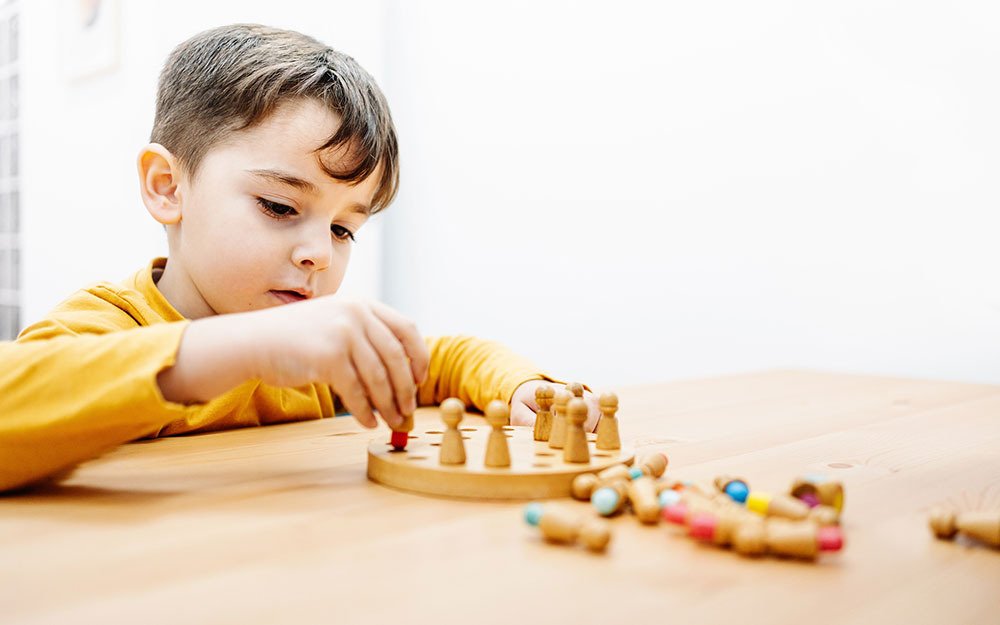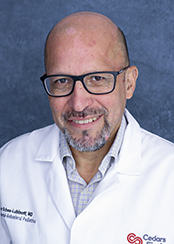Cedars-Sinai Blog
Early Diagnosis of Autism and ADHD
Oct 05, 2023 Victoria Pelham

Many children struggle at some point to fit in with their peers. Some have an especially hard time with social interactions, until one day they or a loved one sees a video on TikTok that helps explain why they can’t seem to keep up.
With the rise of social media, more people are learning how ways of thinking and interacting with the world vary dramatically from person to person and can affect our ability to function. In turn, neurodevelopmental conditions such as autism spectrum disorder and attention-deficit hyperactivity disorder (ADHD) are on parents’ radars—and diagnoses are ticking up.
About 1 in 36 children have autism, according to the most recent Centers for Disease Control and Prevention estimates. Those rates have soared from around 1 in 150 in 2002 and 1 in 44 in 2018. They include increasingly diverse youth across a range of racial and ethnic backgrounds as well as a growing share of girls.
ADHD is even more prevalent, with about 6 million children ages 3 to 17 diagnosed—nearly 10% of all kids—and it is also on the rise.
Autism and ADHD share some symptoms and can show up together (as much as half the time in those with autism, and sometimes nicknamed AuDHD).
“There isn’t an autism epidemic,” explained Cesar Ochoa, MD, director of the new Developmental-Behavioral Pediatrics Program at Cedars-Sinai. “There’s a jump in public awareness—not just in families, but also among therapists and doctors.”
The earlier you can detect a developmental disorder in a child, the more resources that child can have to support them—and the higher the chance of them having a healthy trajectory as they grow, Ochoa said.
Cesar A. Ochoa-Lubinoff, MD, MPH
Struggling to Relate to Others
Autism and other neurodevelopmental disorders look different in everyone and range from mild to severe.
“A key common denominator in children with autism is having a hard time with social interaction and connectedness,” Ochoa said.
Some can initiate interactions with other people but find back-and-forth or reciprocal engagement challenging. They tend to be less aware of others’ expressions or emotions, making it harder for them to maintain friendships. This can make it seem like they’re in their own world.
Children with autism also fixate on interests—such as dinosaurs, letters or numbers—more intensely than their classmates who are not autistic.
"No child is lazy. All children want to do well."
They also can insist on sameness and struggle with change. Sudden transitions might throw them out of sorts—triggering unusual movements such as arm or hand flapping and emotional and behavioral dysregulation.
“Parents will instinctively develop strict routines to keep life smoother,” Ochoa said.
Children with ADHD may exhibit high levels of hyperactivity and impulsivity, such as bouncing off the walls, talking loudly, blurting and impulsive behaviors.
Other children with ADHD may struggle with inattention, distractibility and frequent daydreaming. They often appear disorganized, losing track of time, tasks and school materials such as books.
“Sometimes children and adolescents with ADHD are labeled as lazy,” Ochoa said. “No child is lazy. All children want to do well, and when they don’t, we need to look for a reason behind it.”
Path to Diagnosis
If you’re worried about your child’s development, behavior or school performance, don’t just rely on a social media post or Google search. Reach out to your child’s pediatrician with your concerns.
Pediatricians monitor development during annual well-child visits and can help you understand your child’s strengths and challenges.
Some children with autism have mild symptoms and might need to be referred to an experienced specialist for a more in-depth evaluation.
Parents spend the most time with their children and know them very well. Trust your instincts if you feel something isn’t right, Ochoa urged.
With ADHD, families usually first pick up on academic or behavioral problems at school. Your student might regularly disrupt the class, run late, be unable to complete tasks, or just miss his or her learning goals.
“My main concern is that ADHD takes a toll on children’s self-esteem,” Ochoa said.
But parents can help these kids reach their full potential.
Start by seeking an ADHD assessment. Your pediatrician might refer your child to a developmental-behavioral specialist, psychiatrist, psychologist and/or speech therapist to investigate further. ADHD frequently overlaps with learning disabilities and mental health conditions such as anxiety, obsessive-compulsive disorder and depression.
Ochoa recommends staying in close contact with your kid’s school to monitor progress.
Read: Brain Mapping
Overlooked and Insecure
Many children slip through the cracks, Ochoa cautioned. There aren’t enough specialists, and youth with less obvious symptoms—like girls with inattentive ADHD—usually fly under the radar.
It can also be scary for parents to learn about their child’s challenges, especially when these conditions come with so much stigma.
“Some parents find it really hard to even think about the possibility of their child being different,” Ochoa said.
But kids with unaddressed autism or ADHD may develop anxiety and depression over time or act out with risky behaviors by their teen years.
If children with these conditions receive an appropriate diagnosis, then school accommodations, social groups, and/or behavioral and speech therapies can allow them to catch up on communication and development. In time, they can flourish.
Occupational therapy and ADHD medication address root causes in the brain and help children control their behavior. Kids can also learn to regulate attention, sensory processing and emotions.
As with all chronic conditions, consistent support is critical, Ochoa stressed.
Read: Error Neurons



